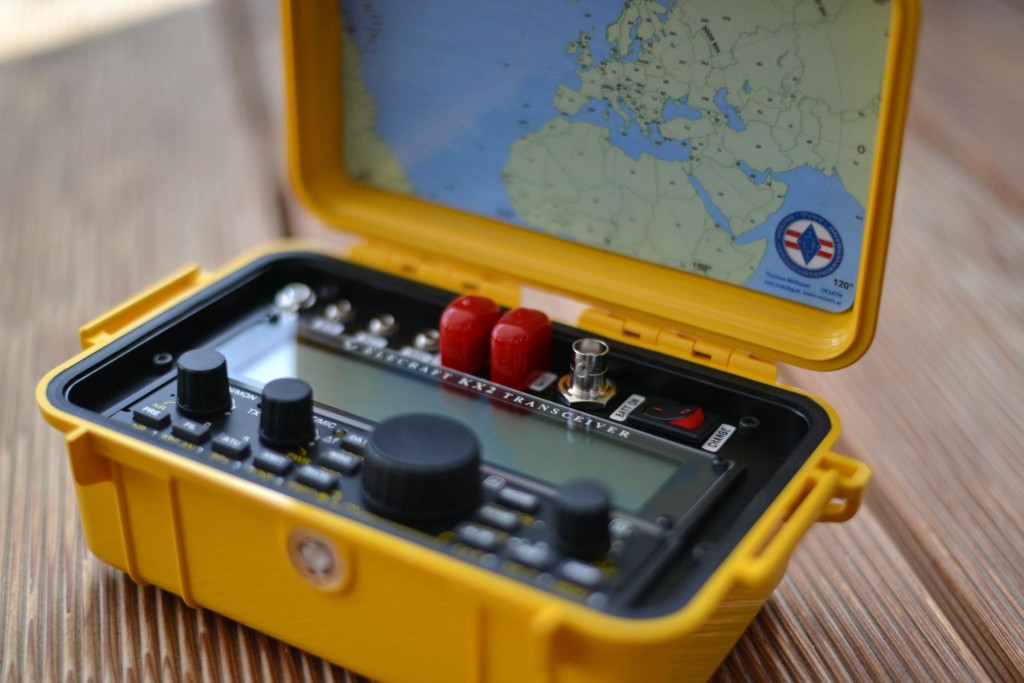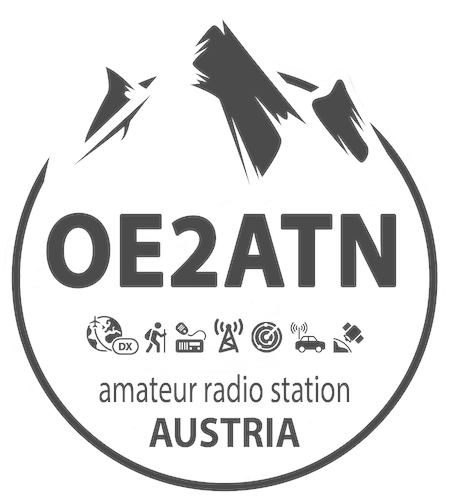KX2 GoBox 2016
My next GoBox is finished, this time for the all new shortly arrived KX2…
The box was made the same style as my KX3 version in 2012 but this time I decided to use a more durable PELI case (model 1050, completely watertight). For sure heavier compared to the light SIGG aluminium box used in 2012 but a really very good protection for this expensive piece of equipment.
The panel is made of 1 mm thin stainless steel (laser cutted) and was painted black to match the KX2. The interior of the box was also painted in black. Four screws and 3D-fasteners (glued to the walls of the box) hold the panel in place.
Unfortunately I´m still not able to produce this boxes in masses but upcoming questions will be answered below.
- dimensions: 182 mm wide x 115 mm deep x 80mm high
- weight: 1 kg = 2,2 lbs = 35,3 ounces
- including original Elecraft LiIon-Battery with 2.6 Ah capacity
- panel drawing download: zipped-DWG
- My iPhone headset is used all the time and can stay connected while lid is closed.

Please feel free to comment below and link your portable solutions…
You will find some additional pictures of the fitting process in our ![]()

One Comment
Tom
To answer some questions which already came up in the yahoo forum…
The right PowerPole
is for charging the internal Battery. The original KX2 battery cable was connected to the switch and then runs back into the KX2.
So you can cut it from the KX2 and load the LiIo via the right PP. Of course on your own risk as Elecraft suggests to remove the battery while charging. My note on this solution: Do you remove your laptop / tablet / phone …. -battery while charging? Sure there might be different opinions now. In ON-position the right PP supplies the voltage of the internal battery – maybe for a little LED to have some light on the knobs or any other accessory.
The left PowerPole is connected to the 12V jack for an external supply on the KX2.
Heatsink and airflow
I do not really care about heat because I´m not operating for longer periods (mostly on mountain tops) and I do no data modes. Just phonie and CW. Never had any heat problems with my old GoBox design, even when operating in direct sun for around half an hour.
The panel drawing
was added above as a zipped DWG file. You can download, edit dimensions of the connector-cutouts and let produce it by your nearby laser-cutting company. Free CAD-software can be found at draftsight.com.
I´m sure you will find some 3D-fasteners as well, if not they can be ordered at QRP-Project in Germany (find the link on my 2012-GoBox page).
Selling the box
MAYBE I could produce some boxes if there is enough interest but this is all done at home. So a lot of time and quite a bit money for the parts has to be invested and the price would be somewhere around 250 dollars I think.
Folks would also have to send me their KX2 because it`s really hard to stuff things inside…
Next is customs… They always are very correct when a parcel from outside the EU arrives and I have to pay Austrian VAT and taxes. I don`t think they would let it through for free just because it will be sent back a few days later??! You see…difficult!
Why not rather a box including “everything”
from the antenna to a spare battery? NO, not in my case. We are often operating together and each of us can put a piece of equipment into his backpack. This box is one kilogram and the antenna (depends on which one we take) from a few grams (HyEndFed antenna) up to 1,8 kilos (Buddipole). OE2SNLs’ spare LiPo battery with 4 Ah is just 300 grams and fits somewhere in the backpack. Visit my KX3 GoBox page > you`ll see the Buddipole-bag which contains all the rest (foldable mast, Buddipole, cable, guying kit, paperlog and so on…). I´m working on shrinking this down as well…